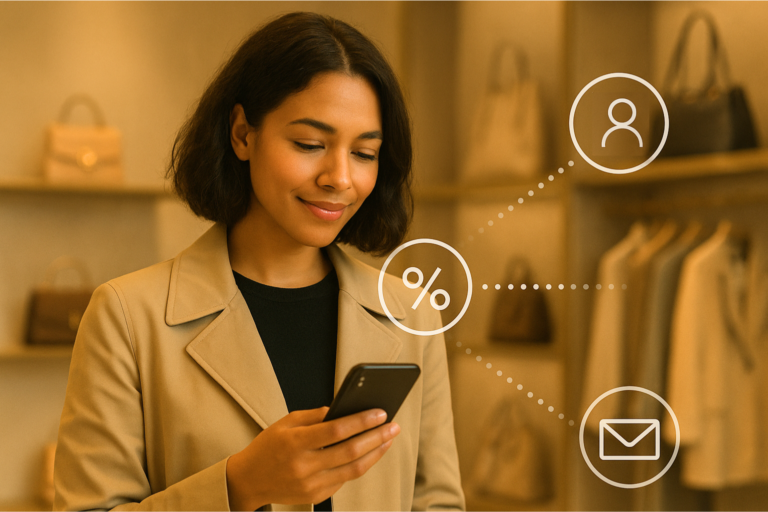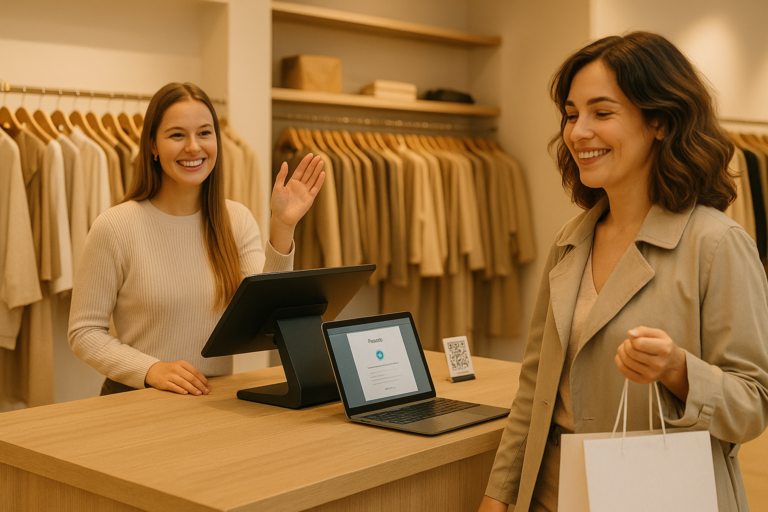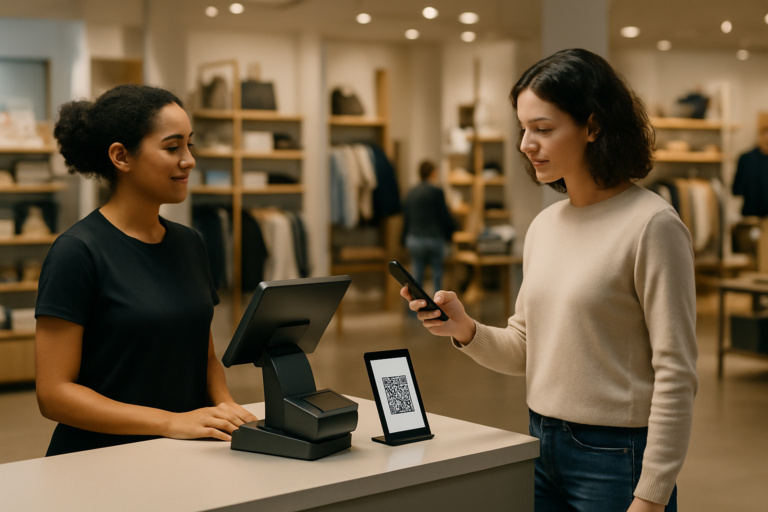In the highly competitive world of retail, having a strong customer loyalty and retention strategy has become increasingly vital for businesses to remain profitable and sustainable. With rising acquisition costs and slower growth in sales (Statista), it has become clear that retaining existing customers is more cost-effective than acquiring new ones. Retailers are now placing a greater emphasis on customer loyalty programs and strategies to build long-term relationships with their customers. But there is no one approach which works for all customers and retail sectors – a successful strategy will be tailored to your customers’ preferences and your value proposition.
In this article, we will guide you through five steps and questions which will help you better understand your specific challenges and opportunities and we introduce a tool which can empower you to implement your new strategy.
Step 1: Which offers are relevant for my customers?
While every customer likes to get discounts on their favourite products, 71% of consumers feel frustrated when a shopping experience is impersonal (Segment). Hardly anyone will make use of the 10% discount on bed linen when you actually need a pair of shoes or a sweater. It is more efficient to adapt offers directly to the current purchase or to previous purchases in order to precisely meet the customer’s taste.
To start with, ask yourself the following questions:
- Which product combinations do my customers buy?
- Which offers are relevant for my customers?
- Are there certain products that are relevant for a specific target group?
Now you can adapt the offers accordingly to turn the end of the customer journey into the beginning of long-term customer loyalty and retention.
Opportunities to deliver personalised offers for better retail customer retention
- Email marketing: you can segment your email lists based on customer behavior and preferences, and send personalised offers and recommendations to each segment.
- Mobile apps: if you have customer mobile apps, this can be used to collect data on customer behavior and preferences, and deliver personalised offers and recommendations to each user.
- Loyalty programs: can be used to track customer purchases and preferences, and offer personalised rewards and discounts to customers based on their individual behavior.
- Social media: you can also use social media to engage with customers and collect data on their behavior and preferences, and use that information to deliver special offers and recommendations to specific customer segments.
- Digital receipts: smart receipts such as refive have the capability to display personalised offers and product recommendations based on the customer’s current purchase and/or purchase history
Overall, the key to delivering personalised offers is to collect and analyse customer data, and use that data to tailor offers and promotions to each individual customer.
Step 2: How satisfied are my customers?
Since you are reading this, you are probably motivated to continuously improve your business. So is the majority of the retail sector. But how can you improve without knowing what went wrong in the first place and whether your customers are generally satisfied when they leave your store?
Important questions for you to clarify are for example:
- How satisfied are customers who have spent more than a certain amount?
- How is my customer satisfaction different at different locations?
- Which factors have an impact on the satisfaction of my customers?
After you answer these questions, you can work specifically on your weak points and possibly address an imbalance in customer satisfaction at different locations.

How do you get this information? With refive’s digital receipts you have the opportunity to capture customer feedback directly on the receipt. This way you can understand immediately after a customer’s visit how their shopping experience was and react accordingly. With refive you also have the option of encouraging your satisfied customers to publish feedback directly as a Google rating. Your customers can thereby share their positive experiences with the greater public. Remember: Nobody promotes you as well as satisfied customers!
Step 3: How do I bring my customers back to my stores?
Even the most loyal customers are sometimes busy with other things in life. Reactivation campaigns are a secret that e-commerce companies have been using as part of their customer loyalty and retention strategy for a long time. Online shops often send special offers if customers haven’t visited their website for a few months. This does not happen coincidentally, but by data-driven reactivation and it also works well for brick and mortar stores.
The following questions are relevant for retail customer retention:
- How often do my regular customers visit my store on average?
- What products and services do they come back for?
- Which type of customer reacts to which reactivation offers?
You might find the necessary information from your loyalty program data. Alternatively, refive gives you the opportunity to capture customer’s contact details and marketing opt-in on the digital receipt so you can reach even new customers or non-loyalty-members with reactivation campaigns. With this feature customers are automatically notified, for example, when they have not bought anything from you within the last 30/60/90 days. You can lure them with an update on new products or a “We miss you” offer!

Step 4: How do my customers want to be rewarded?
Loyal customers deserve a reward! 75% of customers say they are likely to make another purchase after receiving an incentive (Wirecard) and, especially in difficult times, they should feel your appreciation and look forward to coming back to your store again and again. Whether you offer a free product with a stamp card after several visits or value-based discount campaigns for a purchase value of a certain amount, there are no limits to your creativity. However, you should make sure to select the rewards with personal relevance for the customer. Otherwise your loyalty program will be used less, because nobody appreciates unneeded rewards.
Once a customer is active in your loyalty program, you will get measurable benefits: 66% of consumers modify their brand spend to maximize loyalty benefits. (Bond). This is how one-time buyers become regular customers! Additionally, 57% of consumers say they will spend more money on brands to which they are loyal (Accenture).
So, when reviewing your customer loyalty and retention strategy, ask yourself:
- What type of loyalty programs are useful for my customers?
- What rewards can I use to increase customer loyalty?
Frictionless loyalty participation
The convenience of use of a loyalty program is a critical factor in determining whether customers will actively participate in and benefit from the program. Customers are more likely to engage with a loyalty program where they are not required to carry around a physical card. The same applies for downloading an app or the effort required for identifying themselves as members at the cashier. With refive, customers can easily save their loyalty card digitally and automatically collect stamps or points with every purchase. This way you have an overview of all customers who use a loyalty card and at the same time your customers don’t have to carry a card or even remember that they are a member.
Step 5: Which channels are relevant for customer loyalty and retention strategy?
Engagement is an essential prerequisite for an effective customer loyalty and retention strategy. The challenge is that engagement cannot happen without interaction or points of contact between brand and customer. If you want to increase engagement and consequently brand affinity and loyalty, it is helpful to utilise multiple channels and to be aware of customer preferences. While email is a popular channel of communication, it is not necessarily the best channel for your brand or for every customer at every point of the customer journey. For instance, 45% of customers want brands to follow up with them post-purchase via mobile messaging channels and the same customer will prefer different channels for different purposes (Vonage).

A seamless transition from offline to online offers your customers the best possible shopping experience. Social media brings new opportunities to establish closeness to customers by getting to know your customers and their wishes better through chats, posts and likes and being able to position yourself accordingly. In addition, Instagram, Twitter & Co. offer a platform for virtual word-of-mouth advertising, because likes, shares, retweets and reposts will publicize and recommend your business and products free of charge.
But as you use more and more channels, these questions often remain open:
- Which channels should I use for my company?
- On which channels do I reach which target groups?
- How much effort should I put into online customer loyalty?
Omnichannel customer loyalty
With refive you can simplify and complete your omnichannel customer loyalty and retention. Your customers’ smartphones are integrated into the purchase process through the digital receipt. Through the receipt you can instantly provide additional product information or follow up on customers’ product experience even if you do not have their contact information or marketing opt-in. If customers choose to claim their receipt, they have the opportunity to select how to do so – via email, wallet pass, whats app or other. This in itself can be both an indication of their channel preference and the start of post-purchase engagement.
Finally, customers will visit your shop again when they feel comfortable with you. Even a customer who doesn’t buy anything on their first visit will remember the friendly atmosphere if your employees give them good advice and inspire them to make further visits.
Key takeaways for retail customer retention
Personalisation is a key factor for a successful customer loyalty and retention strategy – adapting offers based on the customer’s current or previous purchases shows customers that you understand their needs and preferences. Analysing customer feedback to improve weak points and creating a seamless omnichannel experience also increase overall customer satisfaction. Reactivation campaigns are a great way to bring customers back into the store. Reward programs can make loyal customers feel appreciated. refive is a powerful tool that you can leverage to develop and implement your retail customer retention strategy – from capturing in-store customer data, to empowering you with insights, to personalising offers and promotions, to delivering these offers to customers via multiple channels.










